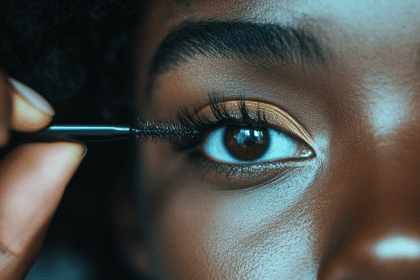Everyone knows that crusty feeling in their eyes when they wake up. While wiping away morning eye goop might seem like just another part of your daily routine, medical experts warn that this common occurrence could sometimes signal serious health issues.
What your morning eye crust tells you
That crusty buildup in your eyes, which doctors call rheum, isn’t just an annoying part of waking up. It’s actually your body’s natural cleaning system at work, but sometimes it can reveal hidden health problems that need attention.
4 reasons your eyes get crusty overnight
- Your natural cleaning system takes a break During the day, your eyes constantly produce tears to wash away dust, pollen, and other irritants. But when you sleep, this cleaning process slows down dramatically. Without regular blinking to spread tears across your eyes, debris starts collecting in the corners.
- Dead cells need somewhere to go Your eyes shed dead cells throughout the day and night. These cells mix with tears and mucus, creating that crusty buildup you notice in the morning. While this process is normal, excessive buildup might indicate an underlying issue.
- Environmental factors pile up Your bedroom environment plays a bigger role than you might think. Dust, pet dander, and even your pillowcase can contribute to morning eye crust. These particles accumulate in your eyes overnight, leading to more significant buildup by morning.
- Your tears change at night Your body’s tear production changes while you sleep. The mixture of water, oil, and enzymes that usually keeps your eyes clean becomes more concentrated, leading to that crusty morning sensation.
When normal becomes concerning
While some morning eye crust is natural, certain signs should prompt a call to your doctor. Excessive crusting, especially when it’s thick, yellow, or green, might indicate an infection. One-sided crusting or difficulty removing the crust could also signal problems requiring medical attention.
The sleep connection
Your sleeping habits affect more than just how rested you feel. Poor sleep quality or sleeping with makeup on can increase eye irritation and crusting. Even your sleeping position can impact how much crust forms in your eyes overnight.
Hidden infection signs
Not all eye infections announce themselves with obvious symptoms. Sometimes, subtle changes in your morning eye crust provide the first clue that something’s wrong. Watch for changes in color, consistency, or amount of crusting.
The allergy factor
Seasonal allergies can significantly increase morning eye crust. If you notice more buildup during certain times of the year, especially accompanied by itching or redness, allergies might be the culprit.
Your everyday habits matter
Simple changes in your daily routine can dramatically affect your morning eye health. Removing makeup before bed, changing pillowcases regularly, and keeping your hands away from your eyes can reduce crusting and potential complications.
The makeup connection
Sleeping with eye makeup on doesn’t just lead to smudged pillowcases. It can significantly increase eye irritation and morning crusting, potentially leading to more serious problems over time.
Contact lens concerns
Contact lens wearers face unique challenges. Sleeping in contacts or not cleaning them properly can lead to increased eye crusting and potential complications. Always follow proper lens care guidelines to protect your eye health.
The dry eye dilemma
Chronic dry eye condition can make morning eye crust worse. This common problem affects millions of people, especially those who spend long hours looking at screens or live in dry climates.
Understanding your tears
Your tears are more complex than just water. They contain a precise mixture of water, oil, and proteins that help protect your eyes. When this balance gets disrupted, you might notice changes in your morning eye crust.
Environmental impacts
Your home environment plays a crucial role in eye health. Air quality, humidity levels, and even your bedding can affect how much crust forms in your eyes overnight.
Prevention strategies that work
Simple changes can make a big difference in reducing morning eye crust. Using a humidifier, keeping your bedroom clean, and practicing good eye hygiene can help minimize buildup and protect your eye health.
When to call the doctor
Certain warning signs should never be ignored. Seek medical attention if you experience persistent redness, pain, light sensitivity, or vision changes along with unusual eye crusting.
Natural remedies worth trying
While some eye crust is inevitable, gentle warm compresses and proper eyelid cleaning can help manage the issue naturally. Just be sure to use clean materials and avoid harsh products near your eyes.
The bottom line
Morning eye crust might seem like a minor annoyance, but paying attention to changes in this daily occurrence could help catch potential eye problems early. By understanding what’s normal and what’s not, you can better protect your eye health and know when to seek professional help.

















